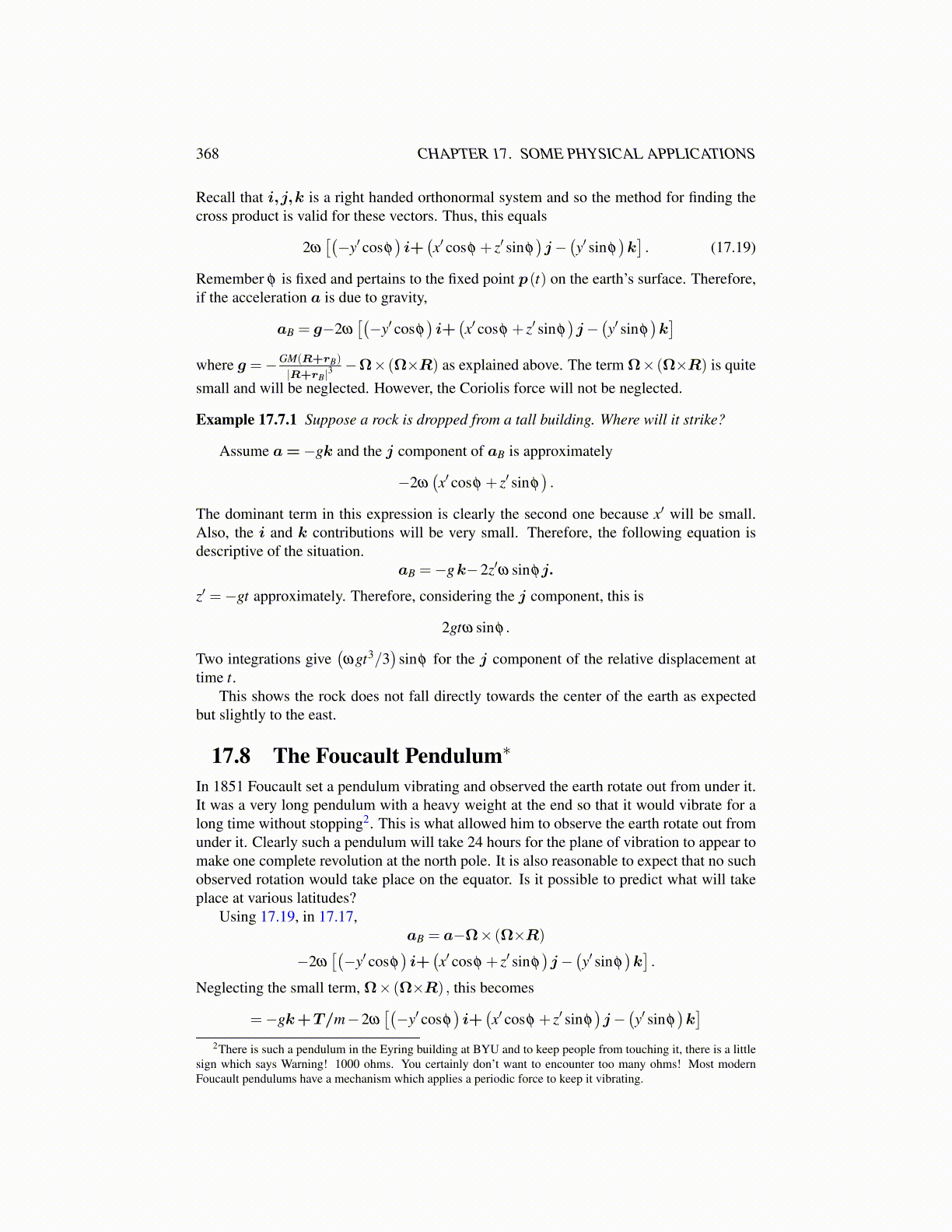
368 CHAPTER 17. SOME PHYSICAL APPLICATIONS
the conditions of 17.22 will hold for some value of c and so the solution to 17.20 havingthese initial conditions will be those of 17.21. (Some interesting mathematical details arebeing ignored here. Such initial value problems as 17.21 and 17.22 have only one solutionso if you have found one, then you have found the solution. This is a general fact shown indifferential equations courses. However, for the above system of equations see Problem 13on Page 370 found below.) Writing these solutions differently,(
x(t)y(t)
)= c(
sin( bt
2
)cos( bt
2
) )sin
(√b2 +4a2
2t
)
This is very interesting! The vector, c(
sin( bt
2
)cos( bt
2
) ) always has magnitude equal to |c| but
its direction changes very slowly because b is very small. The plane of vibration is deter-
mined by this vector and the vector k. The term sin(√
b2+4a2
2 t)
changes relatively fast and
takes values between −1 and 1. This is what describes the actual observed vibrations of thependulum. Thus the plane of vibration will have made one complete revolution when t = Tfor bT
2 ≡ 2π . Therefore, the time it takes for the earth to turn out from under the pendulumis
T =4π
2ω cosφ=
2π
ωsecφ .
Since ω is the angular speed of the rotating earth, it follows ω = 2π
24 = π
12 in radians perhour. Therefore, the above formula implies T = 24secφ . I think this is really amazing.You could determine latitude, not by taking readings with instruments using the North starbut by doing an experiment with a big pendulum. You would set it vibrating, observe T inhours, and then solve the above equation for φ . Also note the pendulum would not appearto change its plane of vibration at the equator because limφ→π/2 secφ = ∞.
17.9 Exercises1. Find the length of the cardioid, r = 1+ cosθ ,θ ∈ [0,2π]. Hint: A parametrization
is x(θ) = (1+ cosθ)cosθ ,y(θ) = (1+ cosθ)sinθ .
2. In general, show that the length of the curve given in polar coordinates by r =
f (θ) ,θ ∈ [a,b] equals∫ b
a
√f ′ (θ)2 + f (θ)2dθ .
3. Using the above problem, find the lengths of graphs of the following polar curves.
(a) r = θ , θ ∈ [0,3](b) r = 2cosθ , θ ∈ [−π/2,π/2](c) r = 1+ sinθ , θ ∈ [0,π/4](d) r = eθ , θ ∈ [0,2](e) r = θ +1, θ ∈ [0,1]
4. Suppose the curve given in polar coordinates by r = f (θ) for θ ∈ [a,b] is rotatedabout the y axis. Find a formula for the resulting surface of revolution. You shouldget
2π
∫ b
af (θ)cos(θ)
√f ′ (θ)2 + f (θ)2dθ